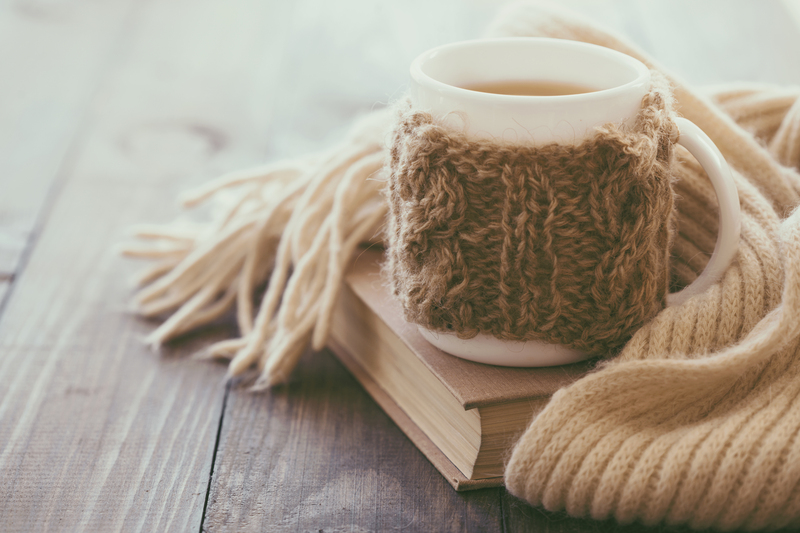Efficient Stovetop Cleaning Hacks to Remove Burnt Residue
Posted on 21/05/2025
Efficient Stovetop Cleaning Hacks to Remove Burnt Residue
If you love cooking at home, chances are you've faced the stubborn challenge of burnt residue on your stovetop. Over time, spills and splatters from pots and pans--especially those that get burned on--can accumulate, leading to unsightly stains and potential performance issues. Keeping your stove pristine doesn't have to feel like a chore. In this comprehensive guide, you'll discover efficient stovetop cleaning hacks to remove burnt residue quickly and effectively, ensuring your kitchen sparkles and your appliances last longer.
Why Regular Stovetop Cleaning Matters
Before diving into cleaning tips for removing burnt-on residue, it's important to understand why regular maintenance is crucial:
- Performance: Grease and burnt residue can hinder heating efficiency and cooking performance.
- Longevity: A clean stove lasts longer, free from corrosive spills and residue buildup.
- Safety: Accumulated food residue poses a fire hazard.
- Appearance: A spotless stovetop keeps your kitchen looking inviting and well-maintained.

Types of Stovetops and Their Cleaning Challenges
Not all stovetops are created equal. Understanding the type of stove you have can help determine the most effective cleaning techniques.
Gas Stovetops
Gas ranges typically feature removable grates and burners. Cleaning burnt-on residue can be tricky, as food and liquid easily seep into crevices.
Electric Coil Stoves
These stoves have exposed coils and drip pans, which can collect hardened food particles and burnt remnants, making scraping and soaking necessary.
Glass & Ceramic Stovetops
Smooth surfaces show every mark. While they are visually appealing, burnt residue can discolor or even scratch the glass, requiring a gentle yet effective approach.
Essential Cleaning Tools and Supplies
Before tackling burnt-on residue, gather the following supplies to ensure efficient stovetop cleaning:
- Microfiber cloths - For wiping and buffing surfaces.
- Non-abrasive sponges - Ideal for scrubbing without scratching.
- Baking soda - An all-natural cleaning powerhouse.
- White vinegar - Excellent for breaking down residue and degreasing.
- Dish soap - Cuts through grease.
- Single-edge razor blade or scraper (for glass tops) - For stubborn burnt bits.
- Old toothbrush - Reaches into tight crevices.
- Plastic spatula - For safely lifting residue off surfaces.
Step-by-Step: How to Remove Burnt Residue from Your Stovetop
Ready to transform your stained stovetop? Follow these efficient cleaning hacks to tackle even the toughest burnt-on messes.
1. Let the Stove Cool Completely
Never clean a hot stovetop. Wait until all components are completely cool to avoid burns and accidental damage.
2. Remove Grates and Detachable Parts
Take off any grates, burners, and knobs. Soak removable parts in a sink filled with hot, soapy water for easier scrubbing.
3. Loosen Burnt-On Grime with Baking Soda Paste
Baking soda is one of the best stovetop cleaners for burnt residue. Mix a thick paste using baking soda and a few tablespoons of water.
- Spread the paste generously over burnt areas.
- Let it sit for 20-30 minutes. For stubborn stains, let it sit overnight covered with a damp towel.
Baking soda's gentle abrasiveness lifts burnt food without scratching.
4. Attack Stains with Vinegar Spritz
White vinegar cuts through grease and enhances the cleaning power of baking soda. Spritz vinegar over the paste--you'll see it fizz, helping to dissolve residue.
Let it bubble for five minutes before scrubbing with a sponge.
5. Scrub with a Non-Abrasive Tool
- Use a non-abrasive pad or microfiber cloth to scrub the area in circles.
- For crevices and hard-to-reach spots, an old toothbrush works wonders.
- Don't use steel wool, as it can damage the finish.
6. Address Extra-Stubborn Burnt Residue
If some burnt patches won't budge, try these stovetop cleaning hacks:
- Razor blade or scraper: For glass tops, gently scrape burnt residue at a 45? angle. Keep the blade flat to avoid scratches.
- Boiling water soak: Pour a small amount of boiling water over the residue (make sure the stovetop can handle it). Allow it to sit, then remove softened grime with a plastic spatula.
- Commercial cooktop cleaner: Use a specialized cleaner (safe for your specific stovetop type), following the manufacturer's instructions.
7. Clean and Dry All Components
After scrubbing, wipe everything down with a damp cloth. Make sure no residue or cleaning paste remains. Dry thoroughly--from surface to grates--before reassembling.
8. Polish and Buff for Shine
Finish with a dry microfiber cloth for a streak-free finish. For electric and gas stoves, polish using a drop of olive oil on a cloth for added shine.
Special Considerations for Various Stovetop Surfaces
Glass and Ceramic Stovetops
Avoid abrasive cleaners that might scratch the glossy surface. Always use a specialized glass cooktop cleaner or the baking soda-vinegar method described above. Never use a metal scraper or scouring pad.
Gas Stovetops
Clean burners using a pin or paperclip to dislodge clogs. Always let parts dry completely before reassembling to prevent inconsistent ignition.
Electric Coil Stoves
Remove the coils and clean beneath them. Do not immerse electrical components in water. Wipe coils with a damp cloth and scrub drip pans as needed.
Preventing Burnt-On Stovetop Messes
The most efficient way to clean your stovetop is to prevent tough messes from setting in. Try these simple habits:
- Wipe spills promptly after cooking while the stovetop is still warm (but not hot).
- Use boil-over guards or lids during cooking.
- Deep-clean weekly to avoid stubborn residue buildup.
- Line drip pans with aluminum foil for easy replacement (for electric stoves).
- Apply a small amount of ceramic cooktop conditioner to glass tops to create a protective layer.
Natural vs. Commercial Stovetop Cleaners
Many households prefer natural stovetop cleaning solutions, such as baking soda and vinegar, for their eco-friendliness, safety, and affordability. However, if you're facing extremely burnt residues or have a specialty surface, consider a commercial cooktop cleaner recommended by your stove's manufacturer.

FAQs About Efficient Stovetop Cleaning
How Often Should I Clean My Stovetop?
Daily after heavy use and at least once a week for deep cleaning helps prevent burnt-on residue from forming.
Can I Use Magic Eraser or Other Abrasive Pads?
While effective on some surfaces, avoid abrasive pads on glass or delicate ceramic stovetops to prevent scratches.
What's the Fastest Way to Remove Burnt-on Grease?
Baking soda and vinegar paste works fast for most stains--combine with a microfiber cloth or soft sponge for best results.
Should I Clean Burner Heads and Grates Separately?
Yes, soaking these parts in hot, soapy water before scrubbing leads to better results and avoids damaging the main surface.
Wrapping Up: Enjoy a Spotless Stovetop with Minimal Effort
Efficient stovetop residue removal doesn't require harsh chemicals or endless scrubbing. By using smart cleaning hacks and regular maintenance, you'll keep your kitchen shining, safe, and ready for your next home-cooked meal.
In summary:
- Act quickly on spills to prevent them from burning onto your stovetop.
- Use baking soda, vinegar, and gentle scrubbing tools to cut through stubborn stains.
- Always match your cleaning method to your stovetop type to prevent damage.
- Deep-clean weekly for best long-term results.
Start using these efficient stovetop cleaning hacks for burnt residue today, and enjoy a bright, beautiful kitchen all year round!





